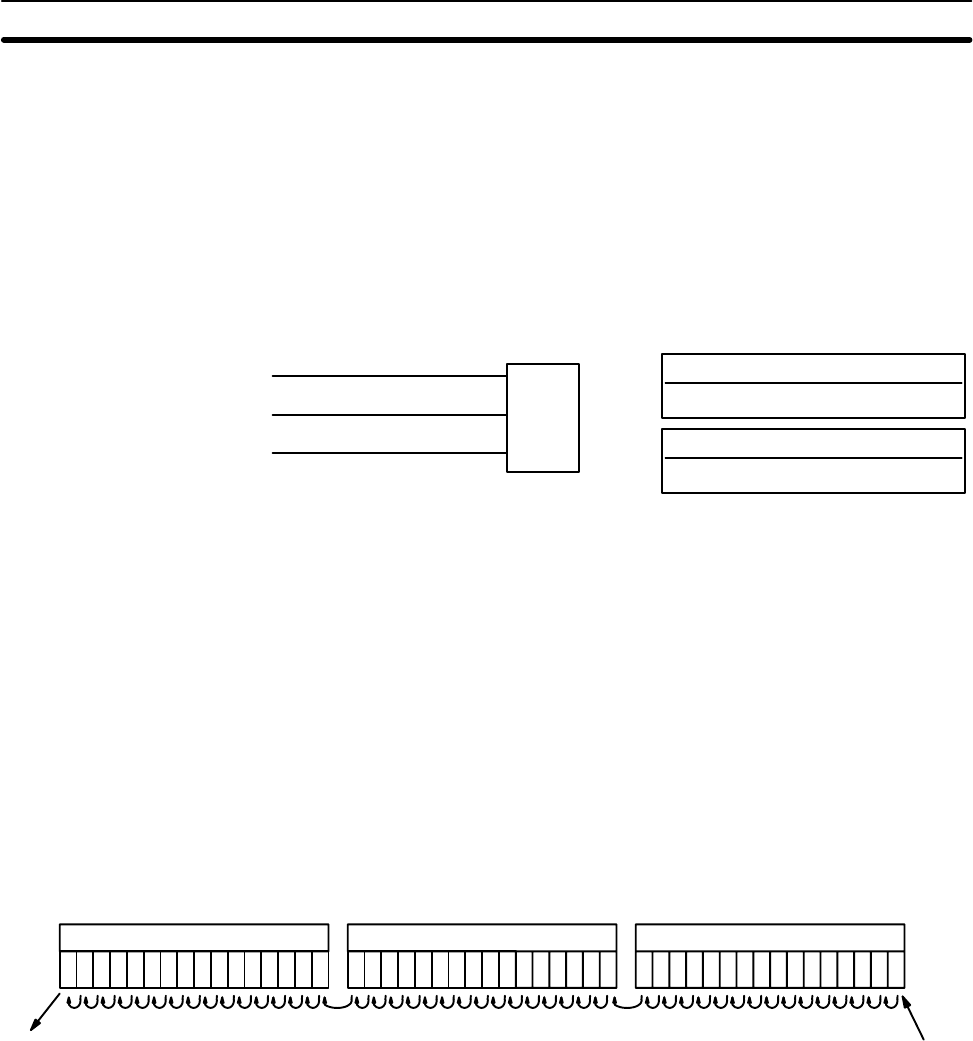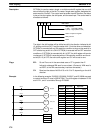
171
5-15 Data Shifting
All of the instructions described in this section are used to shift data, but in differ-
ing amounts and directions. The first shift instruction, SFT(10), shifts an execu-
tion condition into a shift register; the rest of the instructions shift data that is al-
ready in memory.
5-15-1 SHIFT REGISTER – SFT(10)
St: Starting word
IR, SR, AR, HR, LR
E: End word
IR, SR, AR, HR, LR
Operand Data Areas
Ladder Symbol
I
P
SFT(10)
St
E
R
Limitations St must be less than or equal to E, and St and E must be in the same data area.
If a bit address in one of the words used in a shift register is also used in an
instruction that controls individual bit status (e.g., OUT, KEEP(11)), an error
(“COIL DUPL”) will be generated when program syntax is checked on the Pro-
gramming Console or another Programming Device. The program, however,
will be executed as written. See Example 2: Controlling Bits in Shift Registers for
a programming example that does this.
Description SFT(10) is controlled by three execution conditions, I, P, and R. If SFT(10) is
executed and 1) execution condition P is ON and was OFF the last execution,
and 2) R is OFF, then execution condition I is shifted into the rightmost bit of a
shift register defined between St and E, i.e., if I is ON, a 1 is shifted into the regis-
ter; if I is OFF, a 0 is shifted in. When I is shifted into the register, all bits previously
in the register are shifted to the left and the leftmost bit of the register is lost.
Execution
condition I
Lost
data
E
St+1, St+2, ... St
The execution condition on P functions like a differentiated instruction, i.e., I will
be shifted into the register only when P is ON and was OFF the last time SFT(10)
was executed. If execution condition P has not changed or has gone from ON to
OFF, the shift register will remain unaffected.
St designates the rightmost word of the shift register; E designates the leftmost.
The shift register includes both of these words and all words between them. The
same word may be designated for St and E to create a 16-bit (i.e., 1-word) shift
register.
When execution condition R goes ON, all bits in the shift register will be turned
OFF (i.e., set to 0) and the shift register will not operate until R goes OFF again.
Flags There are no flags affected by SFT(10).
Data Shifting Section 5-15


















